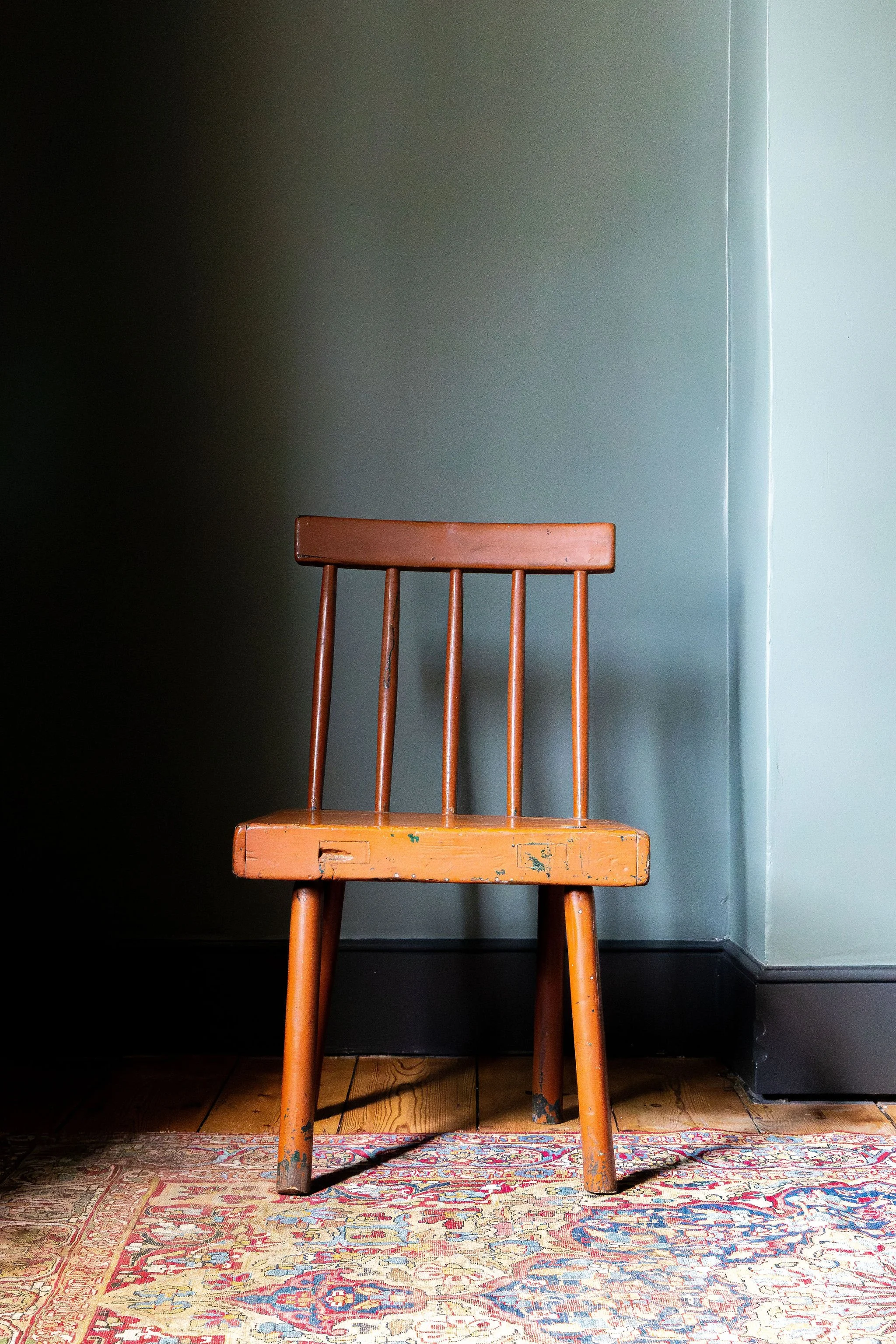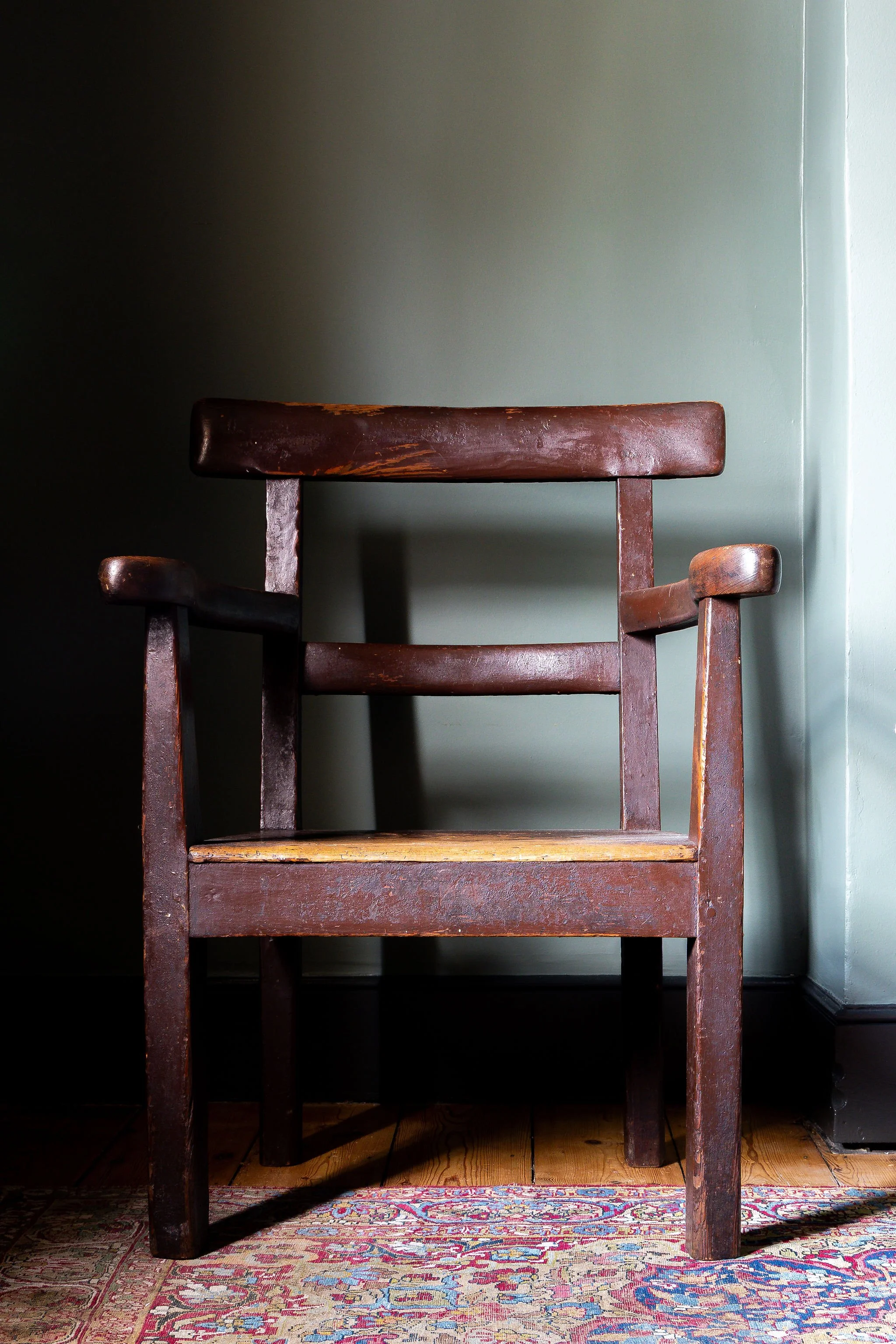A History of Hedge Chairs
Hedge chairs are a form of primitive chair that originated in rural Ireland in the 18th and 19th centuries.
Why Hedge?
Their name derives from the fact they were created by hedge carpenters, who, unlike traditional carpenters, were untrained, and tended to approach chair-making by choosing wood that had naturally grown in the required shape, rather than cutting the timber to fit an established design, saving time and effort.
Quite often, the most suitably shaped pieces were found in hedges, which is why so many hedge chairs are made from mixed woods. This way of working was considered to be inferior at the time, but the method means that every hedge chair is wonderfully unique, and today their individuality and humble construction makes them hugely sought after by collectors.
An 18th Century Irish Hedge Chair
A 19th Century Irish Hedge Chair
Cultural significance
Hedge carpenters often had backgrounds in other trades - farmers, blacksmiths, thatchers etc, and turned their hands to furniture making as and when the need arose in the family or community.
Sometimes referred to as ‘famine’ chairs (a term we feel is a bit misleading), hedge chairs are amongst the most evocative and desirable pieces of Irish vernacular furniture. Many collectors of traditional ‘fine’ antiques look for perfect examples, with minimal restoration etc.
The draw of the hedge chair is quite different. It’s a living object, created out of need from what was available locally, and used by practical people living in difficult and humble conditions, for many generations. The hedge chair was a precious family object, and as such will often have been repaired or repainted over the centuries. The appeal of a particular hedge chair might lie in the lovingly enacted ancient repairs, unique shape, or the last remnants or original paint.
Title
The earliest Irish seating were simple stools, know as ‘creepies’ used to raise people above the damp earthen floor, in single room cottages, and over time they developed into ‘back stools’ that eventually became hedge chairs. Often low to the ground to stay under the smoke from the open fire, hedge chairs are usually constructed using a thick slab seat, a curved backrest, with the spindles and legs wedged into the seat.
Hedge chairs are very much a favourite of ours, and are particularly evocative and atmospheric pieces to live with.










